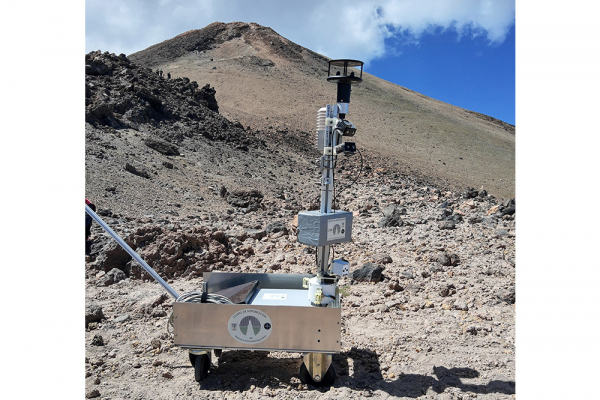UAH participates in new MEDA weather sensor tests on Teide
The instrument with which UAH is participating is part of the NASA Mars-2020 mission, with an expected arrival on the surface of Mars in February 2021.
The Mars 2020 mission began in July 2020 with the launch from Cape Canaveral, Florida of the Atlas V rocket with the 'Rover Perseverance' on board.
The MARS Environmental Dynamics Analyzer (MEDA) is conducting new tests to be checked and verified in a field campaign at the peak of Teide, on the Canary Island of Tenerife.
This instrument is included in NASA's Mars-2020 mission, which looks for signs of past life, as well as the extraction of samples of samples of Martian rocks and soil for possible later transport, in the framework of another mission, to our planet.
Campaigns like this allow you to have a twin experience here on Earth to which you will perform the analogue instrument that is already on its way to Mars. An essential part of the research is to understand the results that the instruments provide us with, thus being able to record the same type of data that will be collected during the mission on Mars. This contributes to have a global vision with which to learn how to interpret those data and make better use of them.
Led by the Centro de Astrobiología CAB-CSIC-INTA, the design of the instrument has had the participation of Miguel Ramos, Professor of Applied Physics at Universidad de Alcalá and co-researcher of the project. The field testing campaigns have been carried out in the Teide National Park with the collaboration of the Instituto Geográfico Nacional (National Geographic Institute, IGN), the Agencia Estatal de Meteorología (State Agency for Meteorology, Aemet) as well as with the support of National parks and the company Volcano Teide.
'This place where we develop this campaign is special because of its altitude, which exceeds 3,500 meters above sea level, and also because of the lack of vegetation and its volcanic appearance that makes us in an environment similar to that we have on Mars. Also, we have the scarcity of cloudiness, a very dry air, so we will have a rotation of the solar ecliptic that allows us to have some radiation measurements in line with what we will find there', notes the researcher of the UAH Miguel Ramos.
The MEDA sensor will record various environmental variables at this new Earth site until this month of November (net radiation; atmospheric temperature and humidity; wind speed and direction; flow, temperature and soil humidity), for further comparison with routine measurements extracted by Aemet at nearby stations (Izaña atmospheric observatory), such as the measurements of direct, global and diffuse solar radiation, optical aerosol thickness and Angström's exponent for the characterization of atmospheric aerosols, as well as other meteorological parameters. This comparison will help verify and understand the atmospheric dynamics and important information that will be extracted by MEDA on the red planet.
Publicado en: Inglés
